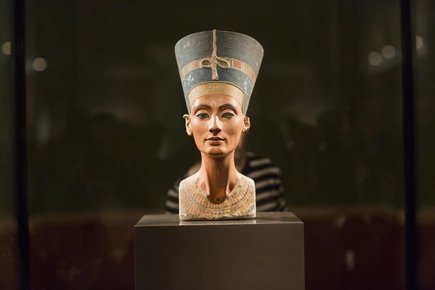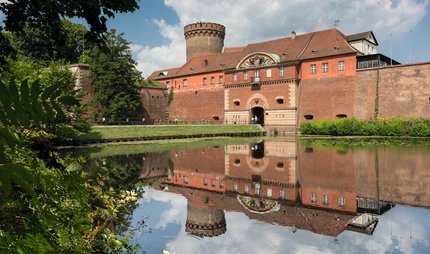
Rosengarten Karl-Marx-Allee
Flowers between splendid buildings
On Karl-Marx-Allee in Friedrichshain, a park with roses, bushes, shrubs, pergolas, benches and walks was built in the 1950s between the magnificent buildings of what was formerly Stalinallee.
Due to several years of work on the nearby underground station and also due to a lack of care, the rose garden had become a pretty sorry sight in recent years. But in winter 2015 and spring of 2016, trainee landscape gardeners from Lichtenberg and Friedrichshain worked under supervision and restored the park completely: flower bed borders, fresh soil, newly planted roses and shrubs, as well as spring flowers have restored the beauty of this park.
The rose garden is located on open space between the magnificent 1950s buildings which were built in part to resemble Soviet architecture and in part to resemble the Neo-classicism inspired by Karl Friedrich Schinkel. This monumental boulevard was to demonstrate Socialist superiority; spacious, light-filled ensembles rather than the earlier tenement buildings of the working classes. In the early days, the apartments on Stalinallee, as it was called at the time, were given as a reward to deserving workers.
The occupant lists show that workers, teachers, police officers and even architects and officials moved in here. This urban planning concept did not focus exclusively on aspects of comfort, such as heating, hot water and lifts, it also included green areas along the impressive facades.
If you take a walk along the double- width footpaths of Karl-Marx-Allee, past the wedding-cake style buildings, strolling quite a distance under trees, you will arrive at the rose garden close to Weberwiese underground station. A wall made of rubble, like the ones built in the early 1950s, and an information panel inform the historically aware that the uprising of 17 June 1953 began at this rose garden, when workers at the huge construction site laid down their tools and went on strike.



